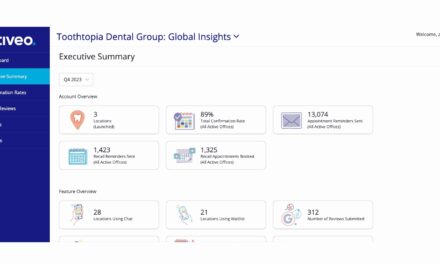You might think there is no more room to grow your orthodontic practice, but you would be wrong. Growth potential is there if you ask the right questions.
By Roger P. Levin, DDS
I would like to share with you a recent conversation I had with an orthodontist producing $1.2 million a year. He called me personally with great skepticism to talk about a recent article he had read where I proposed that most orthodontic practices have a 30% to 50% growth potential if they implement new proven step-by-step systems.
He started the conversation by saying that he did not believe he had a 30% to 50% growth potential and that very few orthodontic practices could get much bigger than his. He felt like he was as busy as he could get and there was no more room to grow. To expand his thinking, I opened my iPad and (without using last names) read him a list of recent clients who started their consulting programs doing $2 million per orthodontist. I was hoping to show him that it is possible. (As an aside, those doctors doing $2 million also have the same growth potential.)
I then explained that the first step achieving growth is always analysis—understanding the current state of the practice. How many patients are fee-for-service? How many are insurance? What are the insurance discounts? How many patients are children? How many are adults? What percentage of cases are traditional orthodontics versus aligners? What percentage of his patients are overdue for debond? And a series of other questions that need to be answered first.
The next step is to look at every core practice system, from scheduling to case presentation to the new patient experience to the treatment coordinator process to referral marketing and so on. Each system needs to be upgraded and fully documented in a step-by-step format so that the existing team can improve, and any new team members can be trained very rapidly.
We touched on 10 or 12 key systems in his practice and identified how out-of-date most of them were. By the time we finished the call he had changed his mind and agreed that his practice had much growth potential. He was now understanding that his belief systems (feeling like he was over-busy), as much as his management systems, were holding him back.
Just like this orthodontist discovered, sometimes you just need to talk to someone who has seen or is doing what you want to do. There are times where you need a teacher or educator to help you. Therefore, we have university professors, executive coaches for business leaders, and people who serve as our mentors.
Don’t limit yourself only to what you think is possible. Learn what others know is possible. Then you can decide if their approach is what you’re looking for. Then, and only then, you can work on the first step to move to the next level.
And as a final note, don’t let a feeling of busyness leave you believing that you have reached your potential. Busy doesn’t always equal productive. OP

Roger P. Levin, DDS, is the CEO and founder of Levin Group, a leading practice management consulting firm that has worked with over 30,000 practices to increase production. A recognized expert on orthodontic practice management and marketing, he has written 67 books and over 4,000 articles and regularly presents seminars in the United States and around the world. To contact Levin or to join the 40,000 dental professionals who receive his Ortho Practice Production Tip of the Day, visit levingroup.com or email [email protected].
Photo 116538164 © Prostockstudio | Dreamstime.com










